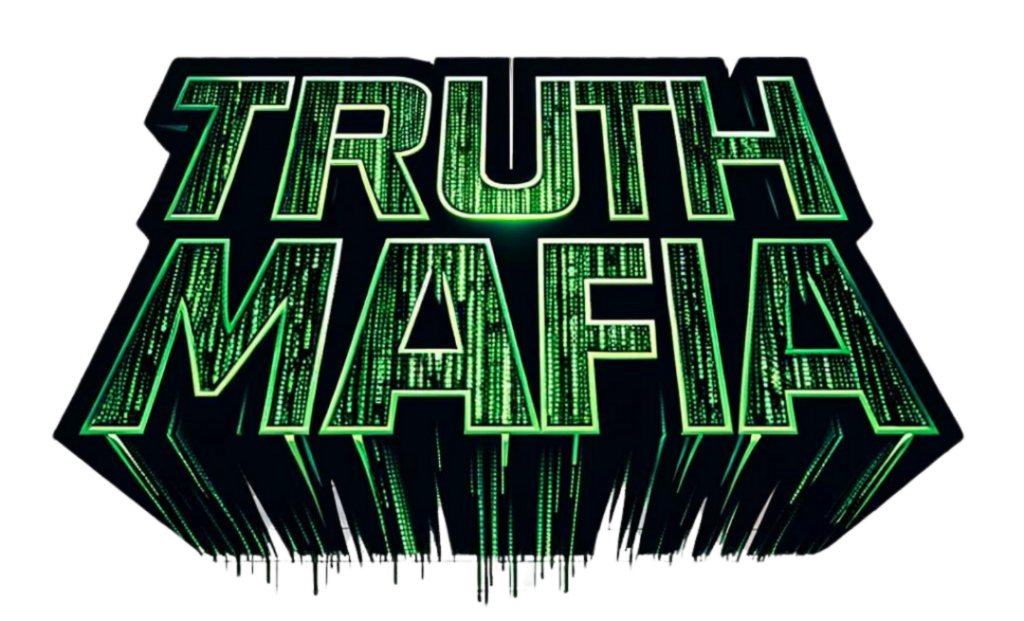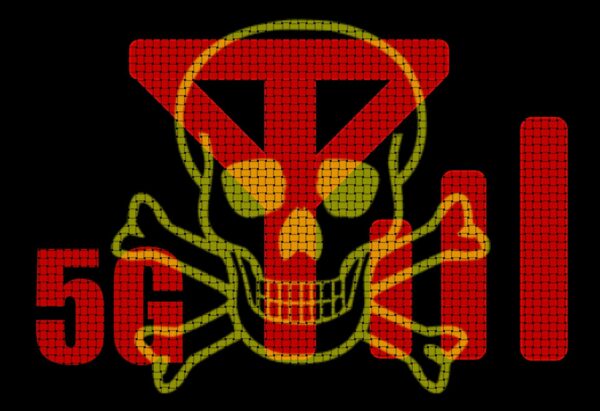

 Stay Informed with Truth Mafia!
Stay Informed with Truth Mafia!

 Join Our Patriot Movements!
Join Our Patriot Movements!


 Support Truth Mafia by Supporting Our Sponsors
Support Truth Mafia by Supporting Our Sponsors




 Follow Truth Mafia Everywhere
Follow Truth Mafia Everywhere







 TOMMY TRUTHFUL SOCIAL MEDIA
TOMMY TRUTHFUL SOCIAL MEDIA



 GEMATRIA FPC/NPC DECODE! $33
GEMATRIA FPC/NPC DECODE! $33 
Find Your Source Code in the Simulation with a Gematria Decode. Are you a First Player Character in control of your destiny, or are you trapped in the Saturn-Moon Matrix? Discover your unique source code for just $33!
Book our Gematria Decode VIA This Link Below: TruthMafia.com/Gematria-Decode
 BECOME A TRUTH MAFIA MADE MEMBER
BECOME A TRUTH MAFIA MADE MEMBER 
Made Members Receive Full Access To Our Exclusive Members-Only Content Created By Tommy Truthful
Click On The Following Link To Become A Made Member!: truthmafia.com/jointhemob
Summary
 Easter, often linked to the ancient goddess Ishtar, is actually rooted in Christian celebrations, specifically the Holy Pasha, commemorating Jesus Christ’s death and resurrection. While some pagan traditions like egg symbolism and the Easter bunny got mixed into the celebration, they were transformed into Christian symbols, representing Christ’s resurrection and victory over sin and death. Despite some connections to old pagan traditions, millions of Christians celebrate Easter to honor Jesus Christ’s ultimate victory, not any pagan deity.
Easter, often linked to the ancient goddess Ishtar, is actually rooted in Christian celebrations, specifically the Holy Pasha, commemorating Jesus Christ’s death and resurrection. While some pagan traditions like egg symbolism and the Easter bunny got mixed into the celebration, they were transformed into Christian symbols, representing Christ’s resurrection and victory over sin and death. Despite some connections to old pagan traditions, millions of Christians celebrate Easter to honor Jesus Christ’s ultimate victory, not any pagan deity. Transcript
Today, we’re going to dive deep and uncover the truth behind these claims and separate fact from fiction. So, first, we gotta ask, who exactly was Ishtar? She was an ancient goddess worshipped in Mesopotamia thousands of years ago. She was associated with love, fertility, and war. Her symbols include lions, stars, weapons, and different things that represent power and sexuality. But here’s the key point. Historical evidence from ancient texts and art show no connection between Ishtar eggs or rabbits. These fertility symbols were never part of Ishtar’s rituals, stories claiming that eggs were dipped in blood of human sacrificed victims for the purpose of worshipping Ishtar have no roots in actual history, even though it seems to be that most people believe this to be true.
Every spring, the first Sunday after the vernal equinox, the spring equinox, they have what was called Ishtar’s Sunday, and they would have a sunrise service. At the sunrise service, the priest of Ishtar would impregnate young virgins on the altar, and during that same service, they would take the babies that were now three months old from the previous year, and they would sacrifice those children on the altar to Ishtar, and then they would take the eggs of Ishtar, and they would dip those eggs in the blood of those young infants. And that is where we get sunrise services, and that is potentially where we get the dying of Easter eggs.
So every year in commemoration of celebrating the death and the deification of Tammuz, which became the Son of God, the Son of His Father, they would set aside 40 days prior to Easter, and they would fast, and they would pray, and they would have a giant feast on Easter Sunday, where they would celebrate the death and the resurrection of Tammuz, and guess what they would have for dinner on that Sunday evening? You got it, Easter ham. And if you think I’m wrong, please post in the comments below proof of this and prove me wrong.
There is no credible information that link Ishtar to eggs or painting eggs in blood from a human sacrifice victim. It just doesn’t exist in the historical record. Anything you might be able to find on this is completely inaccurate, according to my research. Now if I’m wrong, please post below like I said, because I have not been able to find any credible evidence that links these things together. All I’ve been able to find is some people talking about it online, some posts here and there, some stuff on social media, but no actual historical evidence has been found.
Archaeologists have also found no credible historical evidence to back up these claims. So if Easter isn’t linked to Ishtar, where did it come from? People say that the roots of Easter come from Ishtar because the name Ishtar and Easter are very similar, but linguists and scholars don’t believe that to be true, because the name Easter actually derives from another goddess, another pagan goddess, a Germanic goddess called Joster, which is spelled very similar to Easter. And linguists and historians believe that Joster, the goddess, is where the name Easter comes from. So we’ll get into that in just a second, because what I’m saying here is the word Easter itself may come from the goddess Joster.
Now that doesn’t mean that the holiday Easter or what we call Easter today is a pagan holiday. Let me explain why. The real roots of Easter, what we call Easter, lie in Christian celebrations, specifically one known as the Holy Pasha. The Holy Pasha is derived from the Hebrew word Passover. Early Christians celebrated Pasha to commemorate Jesus Christ’s death and resurrection. This wasn’t about springtime or fertility. It was about salvation, redemption, and eternal life. This sacred tradition of Pasha dates back to the very first centuries after Christ and is still celebrated today by millions and millions of Orthodox Christians.
And this Holy Pasha celebration is where the roots of Easter actually begin. However, that does not address the obvious pagan symbolism like rabbits and eggs in springtime. So let’s get into that. How did we get to where we are today? Where Easter that comes from the word Joster, a pagan goddess, is the mainstream word for the Holy Pasha. And where Easter bunnies, Easter eggs in springtime are all associated with this holiday. You might be surprised by the answer. Now, it’s clear that over time as Christianity spread across Europe, some local pagan traditions got mixed up in the Christian celebration.
The name Easter itself comes from the word Joster, like we talked about. And this goddess was associated with springtime, rebirth, eggs, which symbolize new life, naturally became part of these celebrations because they represented Christ rising from the tomb. By the medieval times, Christians officially began blessing and exchanging eggs as symbols of Christ’s resurrection, completely transforming their meaning from old fertility rites to powerful Christian symbolism. So in essence, the medieval Christians usurped the egg as a symbol of paganism from the dark side, from the pagans, and reconstituted it as a Christian symbol.
Whether you agree with this or not, this is why eggs are associated with Easter. But what about the Easter bunny? The Easter bunny also has pagan roots, but it’s not related to Ishtar, according to historians and factual evidence. German folklore, introduced the Osterhase, it was a hair, a rabbit, bringing eggs to children, symbolizing fertility and spring renewal. This tradition came to America with the German settlers and became part of the mainstream Easter culture, entirely separate from any ancient Babylonian practices. Some say these pagan symbols show that Easter is secretly honoring ancient gods, but here’s another way to see it.
Christianity took these symbols, stripped away their pagan meanings, and turned them into powerful declarations of Christ’s victory over sin and death. Rather than being compromised by paganism, Christianity conquered and transformed paganism. This was a bold move showing that Christ’s power was greater than any pagan tradition, because the Bible says every knee will bow to Jesus. And that includes all these pagan gods and goddesses. So today, millions of Christians celebrate Easter, not to honor Ishtar or any other pagan deity, but to celebrate the ultimate victory when Jesus Christ rose from the dead, and conquered sin and death.
Now, of course, today’s Easter customs, like egg hunts, chocolate bunnies, and spring festivals, do have connection to old pagan tradition. Like we already talked about, eggs symbolize new life and cultures worldwide long before Christ. Ancient Persians, Egyptians, and even the Romans saw eggs as symbols of rebirth. However, Christians took that ancient symbol and gave it a new powerful meaning. The empty eggshell now represents Christ’s empty tomb. Early Christians died eggs read to honor the blood of Jesus Christ, and not because of any pagan blood rituals. Because historical evidence shows that this was actually a way for early Christians to boldly proclaim victory over the pagan gods.
They adopted and refined pagan symbols like eggs and rabbits, and took control over them. Why? Because Christianity wasn’t about bowing down to paganism. No, it was about triumphing over it. It was about claiming that these symbols now belong to Jesus Christ. Whether you agree with this methodology or not, that’s what happened. So some people might be watching this and say, I don’t agree with this. By adopting pagan symbols, that means that you are pagan. That’s your opinion. Now, I’m not saying that this is right or wrong. I’m just telling you where these connections came from.
Now, I want to know if you do agree with this. Please put a comment below. Were the early Christians correct in taking over these pagan symbols? Or is it an evil practice today? If you associate any of these ancient pagan symbols with Easter, well, then you’re secretly worshipping Satan. Put it in the comments below. Here’s the thing, everybody. Historically, the church often took pagan customs and transformed them into powerful Christian symbols. Not as a compromise, but as a sign of victory. Like building churches over old pagan temples. Christianity didn’t erase culture, it redeemed it.
That was the view of these early Christians. In my opinion, you’re not participating in secret pagan rites. You’re celebrating something far bigger. The victory that Christ has over this darkness, over death, and over every pagan idol humanity has ever worshipped. Because the authority of Jesus Christ transcends everything on this earth and beyond. I want to thank you all for watching this video. Until next time, God bless you all. [tr:trw].






